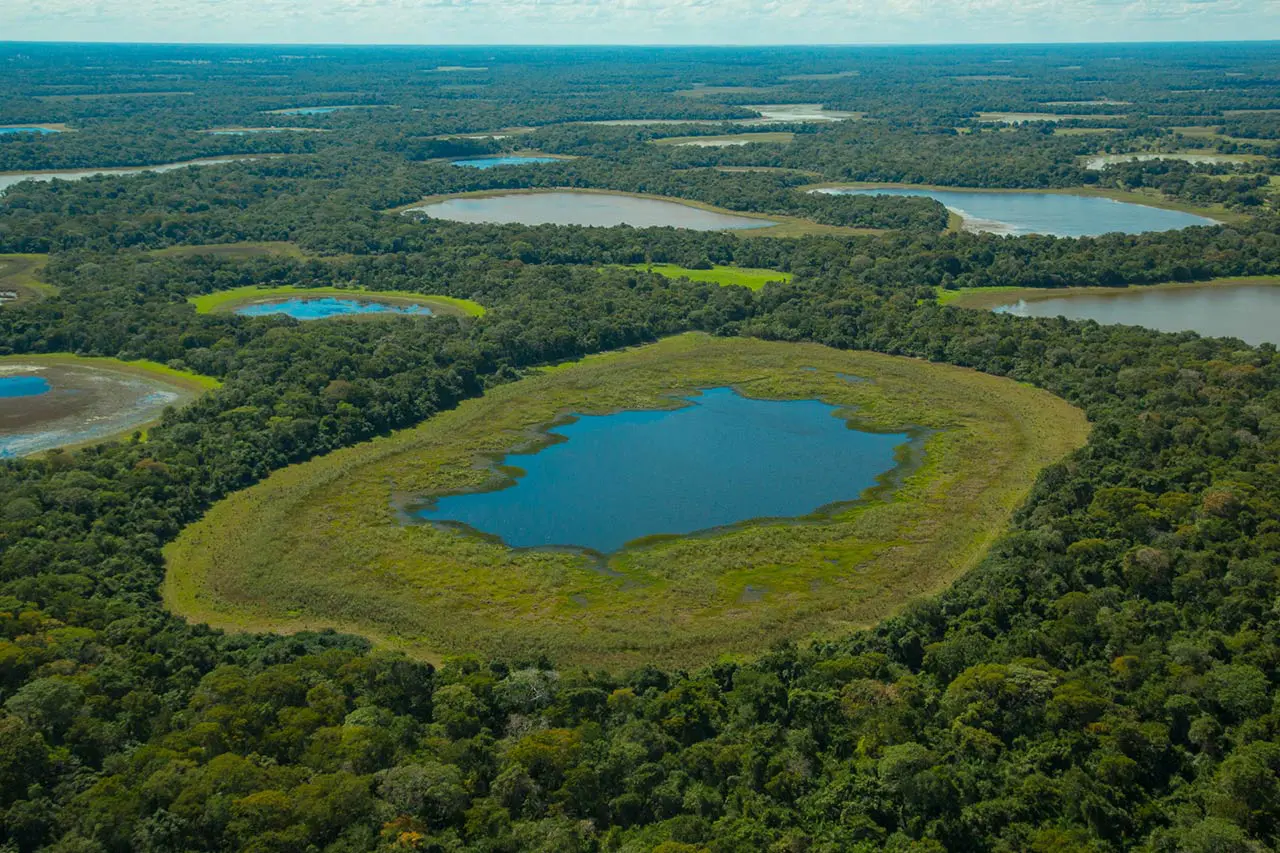Some of the most productive places on Earth
Over a third of the world’s population live in coastal areas
Marine, coastal, and wetland ecosystems are among the most productive, yet threatened, ecosystems in the world. They include open-ocean, nearshore coastal areas, places where freshwater and saltwater mix, and interior wetlands.

Chilean flamingos in the mangrove wetlands of Peru’s Tumbesian coast.
Over a third of the world’s population live in coastal areas and they depend on the many services that ecosystems such as coral reefs, mangroves, and wetlands provide.
Peru’s northern sea — home to species such as sea turtles, humpback whales (Megaptera novaeangliae) and the endangered Humboldt penguin (Spheniscus humboldti) — holds roughly 70% of the nation’s marine biodiversity, including many endemic species. The coastal waters here constitute the most productive cold water upwelling system on the planet and support one of the world’s largest fisheries — accounting for nearly 20% of global fish stocks.
Despite high levels of biodiversity, coastal ecosystems lack sufficient legal protection and face enormous threats.
Despite its high levels of biodiversity, endemism, and economic significance, this eco-region lacks sufficient legal protection and faces enormous threats including unsustainable fishing practices, industrial pollution, and unmanaged tourism.

Bajo Baudó Regional Protected Area
Mangrove forests are part of the transition zone between aquatic and land environments.
Mangroves are tropical trees with intricate root systems that thrive in conditions most plants could never tolerate — salty, muddy, coastal waters. These ecosystems are generally found in warmer areas between the latitudes of 32 degrees north and 38 degrees south. Nature and Culture’s Bajo Baudó Regional Protected Area in Colombia conserves 776,000 acres, including 113,000 acres of mangrove forests, which protect against storm surges and coastal erosion and provide nursery habitat for juvenile shrimp and fish. It is the largest mangrove area in the Department of Chocó.
Mangrove forests provide shelter for a variety of marine life and are important nursery areas for young marine animals, from 1-inch gobies to 10-foot sharks. With the ability to store vast amounts of carbon — up to 10 times more carbon than tropical forests — these ecosystems are key weapons in the fight against climate change.

Wetlands cover just 6% of the Earth’s surface.
Wetlands are places where land is covered by shallow water. These ecosystems provide food, clean water, storm protection, and refuge for countless people and animals around the world. Despite their global significance, an estimated one-half of all wetlands on the planet have disappeared.
The Pantanal is the world’s largest tropical wetland and one of the most pristine and biologically rich environments on the planet. At 42 million acres, it sprawls across three South American countries—Brazil, Bolivia, and Paraguay and is home to home to 1000 bird species, 400 fish species, 300 mammalian species, 480 reptile species, and over 9,000 subspecies of invertebrates.

At 42 million acres, the Pantanal is the world’s largest tropical wetland.
This massive wetland is a refuge for iconic wildlife. Some of the Pantanal’s most lively and charismatic inhabitants include caimans (Caimaninae), jaguars (Panthera onca), giant anteaters (Myrmecophaga tridactyla), Hyacinth macaws (Anodorhynchus hyacinthinus) and green anacondas (Eunectes murinus) – the world’s largest snakes.


Nature and Culture works to conserve the marine, coastal, and wetland ecosystems of Colombia, Ecuador, and Peru — some of the richest on Earth. These critical places are threatened by a number of factors including unsustainable development, overfishing, environmental pollution, and climate change. Informed and responsible stewardship of these beautiful regions is critical to their survival and the many endangered species that call them home.



